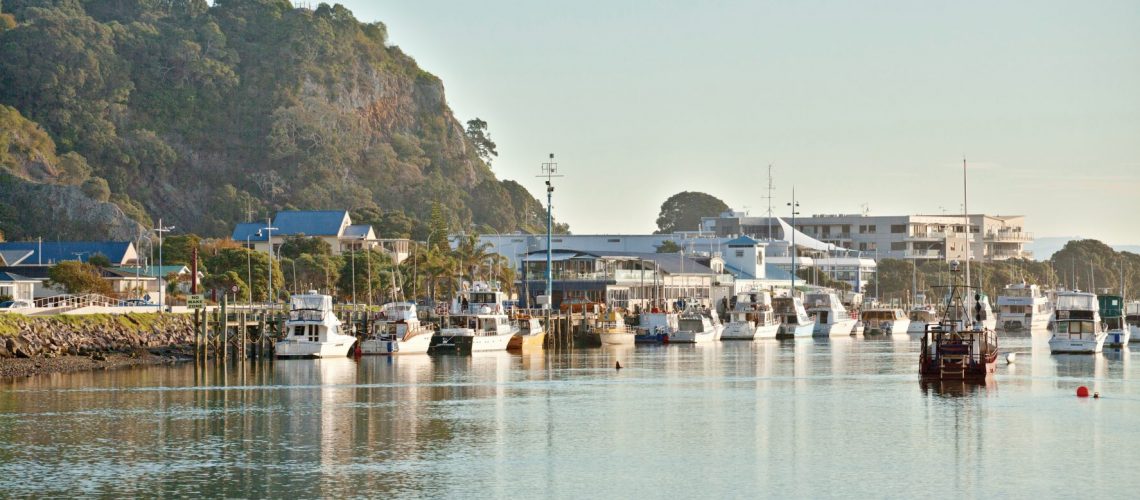Nằm trên Đảo Bắc của New Zealand trong vùng Eastern Bay của Plenty, Quận Whakatane tự hào có tầm nhìn tuyệt đẹp ra bờ sông và những con đường mòn bụi rậm tuyệt đẹp cầu xin được khám phá. Nhưng cũng có một lịch sử phong phú đến quận Whakatane mà du khách có thể quan tâm đến việc tìm hiểu thêm vì nó đóng một phần trong đất nước tồn tại ngày nay. Dưới đây là một số lịch sử bạn có thể tìm hiểu về khi bạn lưu trú trong khu vực.
Sự xuất hiện của những người định cư Maori đầu tiên
Toi te Huatahi, sau này được gọi là Toi Kairakau, đã hạ cánh tại Whakatane vào năm 1150 sau Công nguyên để tìm kiếm cháu nội của ông, Whatonga. Khi không thể xác định vị trí mình, Toi quyết định ở lại khu vực và xây dựng một ngôi làng (còn gọi là một pa) trên điểm cao nhất của mũi đất. Ngày nay, khu vực này được gọi là Whakatane Heads và cung cấp tầm nhìn tuyệt đẹp của thị trấn bên dưới.
Sự xuất hiện của những người định cư châu Âu
Những người đánh cá voi, những người đóng dấu, những nhà truyền giáo, và thương nhân từ các thuộc địa châu Âu đã biến vùng Whakatane trở thành quê hương của họ trong thập niên 1830. Vùng đất này trở nên nổi tiếng như một khu vực đóng tàu với những chiếc thuyền này dùng để vận chuyển ngô, khoai tây, lúa mì, và các hàng hóa khác đến các khu vực phía bắc qua sông Whakatane. Thủy lộ ban đầu hiện diện ngày nay với tàn dư tại hồ Sullivan và đầm Awatapu.
Các cuộc chiến tranh New Zealand
Một loạt các cuộc xung đột giữa năm 1845 và 1872 được biết đến với cái tên The New Zealand Wars đã chứng kiến chính phủ Thuộc địa và đồng minh Maori làm chiến đấu chống lại những người định cư Đồng minh Maori. Quận Whakatane đóng một vai trò sống còn trong cuộc xung đột. Một quân đội vũ trang đã đóng quân bên trên thị trấn trong một thời gian ngắn, và bãi biển cũng được chọn làm địa điểm cho một cuộc gặp gỡ lịch sử giữa Thủ tướng Joseph Ward và nhà hoạt động người Maori Rua Kenana Hepetipa.
Nhà họp Mataatua Wharenui/Maori
Hoàn thành vào năm 1875, cấu trúc tuyệt đẹp này đã được cung cấp cho Nữ hoàng Victoria bởi bộ tộc Ngati Awa. Thật không may, Nữ hoàng đã không thể thực hiện chuyến đi đến New Zealand. Thay vào đó, vào năm 1924, tòa nhà được đưa đến Luân Đôn nơi vua George và Hoàng hậu Mary đến thăm nó. Sau đó nó sẽ tham quan thế giới xuất hiện ở các quốc gia như Úc. Nhà họp Mataatua Wharenui/Maori từ đó trở về địa điểm nó ban đầu được xây dựng trên rìa Whakatane. Nó cũng đã được khôi phục lại vinh quang ban đầu của nó và được trưng bày cho khách du lịch đến thăm.
Đường mòn lịch sử
Đối với du khách muốn tìm hiểu thêm về lịch sử của quận Whakatane, có một đường mòn đi bộ với một số mảng bám tại các địa danh với thêm thông tin về tầm quan trọng của khu vực. Các địa điểm được bao gồm trên đường đua là:
• Hang động Muriwai
• Mataatua Waka Replica
• He Matapuna Paru
• Otuawhaki
• Te Papaka
• Pohaturoa
• Thác Wairere
• Kapu Te Rangi
• Te Toka a Taiao
• Đá Irakewa
• Điểm Kohi

















































